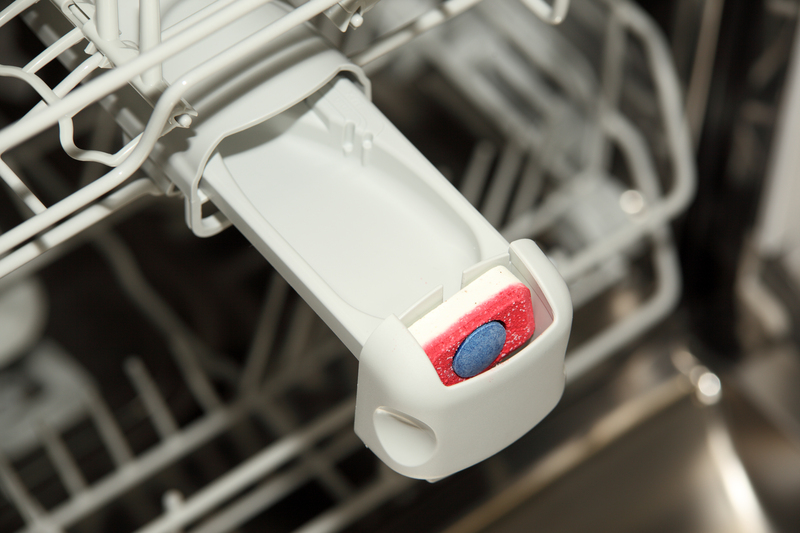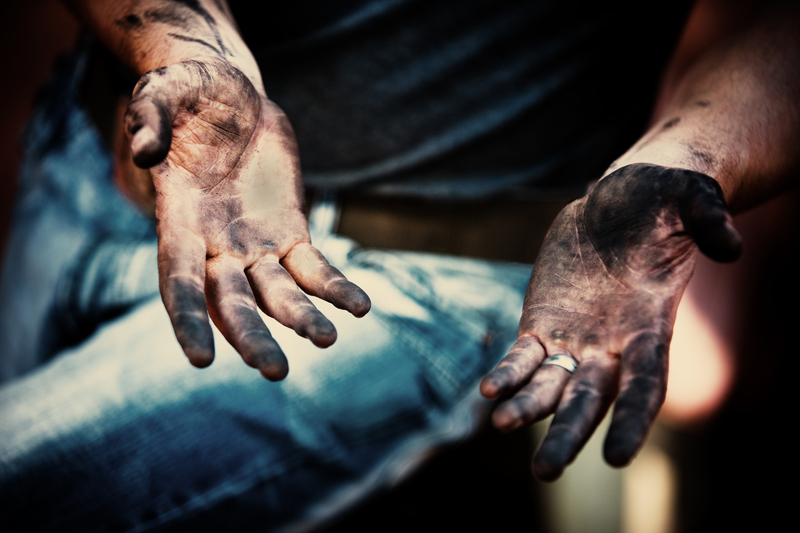Preserve the Beauty of Velvet Curtains With These Safe Washing Techniques
Posted on 02/06/2025
Preserve the Beauty of Velvet Curtains With These Safe Washing Techniques
Velvet curtains epitomize luxury, opulence, and timeless elegance. However, their lush textures demand exceptional care to maintain their beautiful sheen and soft drape. Washing velvet curtains incorrectly can quickly turn grandeur into gloom, resulting in flatness, fading, or irreversible texture damage. Fortunately, with the right velvet curtain cleaning techniques, you can safeguard their allure for years to come.
In this comprehensive guide, you'll discover expert tips and step-by-step instructions for preserving velvet curtains, addressing everything from routine maintenance to deep washing methods. Learn how to confidently keep your curtains plush, lustrous, and elegant with safe washing and care strategies.
Why Do Velvet Curtains Require Special Care?
Velvet is a unique fabric with a dense, short pile that gives it its signature soft touch and shimmering appearance. The material is especially sensitive to friction, heat, and moisture, which can mar its finish or permanently flatten its pile. Compared to cotton, linen, or polyester curtains, velvet drapes need more delicate handling both during cleaning and daily use.
The Nature of Velvet Fabric
- Structure: Velvet is woven as a double cloth and then cut to create millions of short, upright fibers called the pile.
- Sensitivities: Water and aggressive detergents can distort these fibers, resulting in matting or crushing.
- Types of Velvet: There are several velvet types--cotton velvet, silk velvet, polyester and crushed velvet, with varying cleaning requirements.
Understanding how velvet reacts to washing is key to prolonging its life and ensuring your curtains remain a statement of sophistication in your home.

How Often Should Velvet Curtains Be Cleaned?
Unlike other curtain fabrics, velvet drapery does not fare well with frequent washing. Most experts recommend semi-annual or annual deep cleans, depending on your environment (smoking, pets, heavy dust, etc.). However, gentle weekly maintenance is appropriate and highly effective in retaining their beauty.
Routine Maintenance Tips
- Dust Regularly: Use a soft handheld vacuum with a brush attachment, or gently shake the curtains outdoors to remove surface dust.
- Immediate Attention: Spot clean any marks or stains as soon as they occur using a safe spot cleaning method (explained below).
- Avoid Sun Damage: Prolonged sunlight exposure can fade velvet, so consider lining your curtains or using UV-protective window film.
Safe Washing Techniques for Velvet Curtains
To preserve the beauty of velvet curtains, select a cleaning method based on the manufacturer's label, the type of velvet, and the extent of dirt or staining. The primary options include:
- Professional dry cleaning
- Hand washing
- Machine washing (only for certain synthetic velvets)
- Spot cleaning
- Steam cleaning
Check the Care Label
Always read the care instructions sewn into your velvet drapery. If it says "dry clean only," avoid water-based washing altogether. If water washing is not forbidden, proceed with caution as outlined below.
1. Dry Cleaning: The Safest Option
Most authentic velvet curtains--especially those made from silk or cotton--are best handled by professional dry cleaners. This method uses non-water-based solvents that gently extract dirt and stains without risking water damage or pile deformation.
- Advantages: Preserves color and pile; eliminates the risk of shrinkage.
- Disadvantages: More expensive; not suitable for repeated cleaning.
If your curtains are valuable or heirloom pieces, entrust them to an experienced dry cleaner familiar with luxury fabrics.
2. Hand Washing Velvet Curtains
If your care label allows for hand washing, follow these safe steps to minimize damage:
Step-by-Step Guide to Hand Washing
- Remove Dust: Shake or vacuum the curtains thoroughly.
- Prepare a Wash Basin: Fill a large tub with lukewarm water and add a small amount of mild liquid detergent (preferably one designed for delicates).
- Test for Colorfastness: Dab an inconspicuous area with a wet white cloth to ensure the dye does not bleed.
- Submerge Gently: Place the velvet curtain in the soapy water. Do not swirl, wring, or twist. Lightly agitate the fabric with your hands.
- Soak: Leave the curtains in the solution for no more than five minutes.
- Rinse: Carefully drain the soapy water and refill the basin with clean, lukewarm water. Rinse the curtain gently, twice if necessary, until all detergent is gone.
- Water Removal: Lay the curtain flat on a clean towel. Roll the towel and curtain together to press out excess water. Do not wring.
- Dry: Lay flat on a drying rack, reshaping as necessary. Keep away from direct sunlight and heat sources.
Pro Tip: Hand washing is best for smaller velvet drapes or panels; full-sized curtains can be cumbersome and risk stretching.
3. Machine Washing Velvet: When Is It Safe?
Only consider machine washing if the care label specifically states it is safe, and the velvet is made from polyester or another synthetic fiber. Never machine wash silk or cotton velvet curtains.
Machine Washing Instructions
- Use a gentle cycle and cold water.
- Employ a mesh laundry bag to minimize fabric movement and friction.
- Wash curtains alone--never with other items--to prevent crushing the pile.
- Use only a mild detergent formulated for delicates.
- Avoid spin cycles--select the lowest spin setting available.
After washing, follow the same flat-drying regime outlined above to prevent pile deformation and shrinkage.
4. Spot Cleaning Velvet Curtains
Immediate action is crucial for stains. Spot cleaning is often all that's necessary for fresh marks or spills. The key is to never over-wet the pile or rub vigorously.
Spot Cleaning Steps
- Blot the area gently with a soft, absorbent cloth. Do not rub--press to lift away as much liquid as possible.
- Mix lukewarm water with a drop of mild detergent.
- Dampen another clean cloth with the solution and gently dab the stain.
- Use a third cloth, dampened with plain water, to blot away soap residue.
- Press a dry towel on the treated area to remove excess moisture.
- Once dry, revive the pile by brushing lightly with a velvet brush or a soft clothes brush, always in the direction of the nap.
5. Steaming: An Alternative to Washing
Steam cleaning is another gentle method for freshening velvet without water immersion. It works wonders for:
- Removing surface dust and allergens
- Relaxing creases and wrinkles
- Reviving the pile's loft
Use a handheld clothing steamer and hold it several inches away from the fabric, gently sweeping it over the entire curtain. Avoid direct prolonged contact to prevent moisture blotches.
Tips to Maintain the Beauty of Velvet Curtains Between Washes
Proper routine care can vastly extend the lifespan and luster of your velvet drapes. Use these techniques:
- Regular dusting or vacuuming: Prevents buildup that could settle into the pile and dull the fabric.
- Avoid touching with greasy or dirty hands: Natural oils can stain velvet and attract dust.
- Use curtain liners: Liners protect velvet from sun fading and environmental grime.
- Rotate curtains: If possible, swap panels seasonally to ensure even wear and reduce sun exposure on one side.
- Use tiebacks: Prevent heavy or frequent folds that could crush the pile when curtains are drawn.
How to Restore Velvet Pile
If your curtain's pile becomes flattened during washing or drying, restoration is often possible:
Restoring Velvet Texture
- Lightly mist the area with water (a spray bottle works best) or use a steamer from a safe distance.
- Once just damp, brush the nap upwards and gently fluff the fibers with a soft bristle brush.
- Allow to air dry, repositioning as needed to maintain the curtain's original shape and pile lift.
Never iron velvet curtains directly; high heat can permanently scorch the pile. If you must remove wrinkles, steam is the safest choice.
Common Mistakes to Avoid When Washing Velvet Curtains
Even well-intentioned cleaning efforts can harm your curtains if you're not aware of common pitfalls. This list will help you avoid costly errors:
- Over-washing: Excessive cleaning destroys the velvet's texture and color.
- Wringing or twisting: This crushes the delicate fibers and deforms the fabric.
- Using hot water: Always use cold or lukewarm water, as hot water can shrink or warp velvet.
- Strong detergents or bleach: Stick to mild products made for delicates or hand wash cycles.
- Direct tumble drying: The agitation and heat will ruin the pile--always air dry flat.
- Ironing the velvet face: If ironing, only do so on the reverse side and protect the fabric with a pressing cloth.
Professional vs. At-Home Velvet Curtain Cleaning
Main keyword variations to consider: velvet drape cleaning, velvet curtain washing, how to wash velvet curtains. While at-home techniques are viable for many types of velvet, very heavy, lined, or antique curtains warrant professional care. If in doubt, always err on the side of caution and consult a textile cleaning specialist.
DIY cleaning is suitable when:
- The label permits water-based or gentle washing
- The curtains are unlined and not antique
- There are no significant stains or odors requiring deep solvent treatment
Professional cleaning is best when:
- The fabric content is uncertain or the curtains are valuable
- Heavily lined or oversized drapes are involved
- Severe staining or odor removal is necessary

Frequently Asked Questions About Velvet Curtain Care
Can you wash velvet curtains in a washing machine?
Only if the care label says so and the fabric is synthetic velvet, not silk or cotton.
What detergent is safe for velvet curtains?
A mild, pH-neutral detergent for delicates is optimal. Avoid fabric softeners and bleach.
How do you keep velvet curtains from crushing during storage?
Always store flat or rolled, not folded. Use breathable cotton bags or sheets as covers, and never compress under heavy objects.
How do you remove wrinkles from velvet curtains?
Use a gentle handheld steamer. Avoid ironing, which can damage the pile.
Conclusion: Keep Your Velvet Curtains Luxurious for Years to Come
Velvet curtains are an investment in style and comfort. With proper velvet curtain washing techniques and smart, gentle maintenance, you can enjoy their unmistakable beauty without worry. Always pay attention to manufacturer instructions, opt for the safest cleaning method available, and address stains promptly.
By following these safe washing techniques for velvet curtains, you'll preserve their plushness, color, and graceful drape, ensuring your home always carries that touch of timeless elegance velvet provides.
Ready to refresh your velvet curtains? Follow these best practices--and your windows will thank you with years of luxurious beauty!






